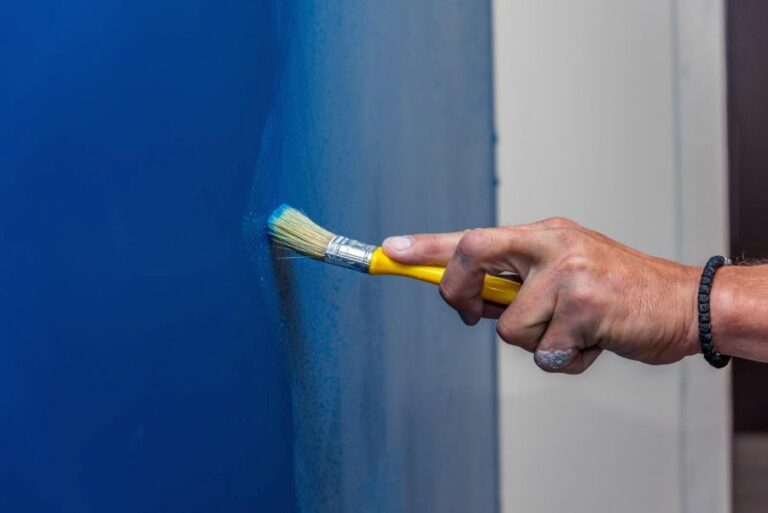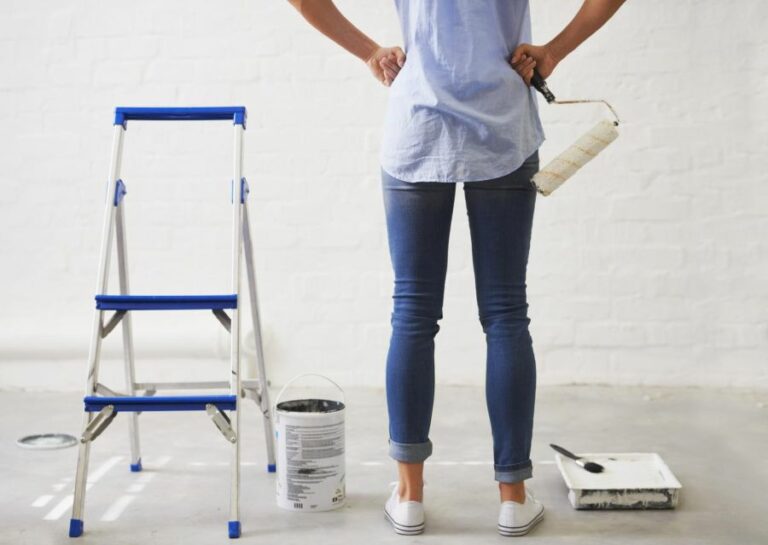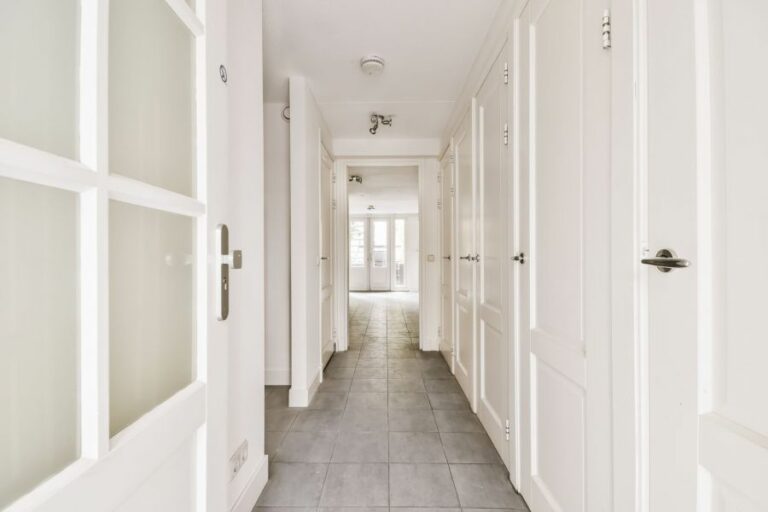Tips For Using Oil-Based Indoor Paints, 25 Things You Should Know
Are you planning to refresh your interior space with a new coat of paint? Look no further! We provide valuable tips for using oil-based paints to achieve a professional and durable finish. Our experts will guide you through the painting process, ensuring you make the best decisions for your home improvement project.
Tips for using oil-based indoor paints:
When using oil-based indoor paints, ensure proper ventilation, wear protective gear, and clean tools with paint thinner. Prepare surfaces by cleaning, degreasing, sanding, and priming. Use quality brushes and rollers, thin paint if needed, and apply consistently with smooth strokes. Allow adequate drying time before re-coating.

Struggling with oil-based indoor paints? We’ve got your back! Keep reading to uncover useful tips and tricks for achieving perfect results, making your painting experience smoother and more enjoyable. Dive in for a colorful transformation!
Contents
- 1 Guidelines for Applying Oil-Based Paints Indoors
- 2 Is Oil-Based Paint Suitable for Interior Walls?
- 3 Drawbacks of Using Oil-Based Paints
- 4 Techniques for Painting Walls with Oil-Based Paint
- 5 Achieving a Smooth Finish Using Oil-Based Paint
Guidelines for Applying Oil-Based Paints Indoors
Oil-based paints are known for their durability, long-lasting finish, and rich colors. Because of these advantages, many homeowners and professionals prefer them for their indoor painting projects.
However, working with oil-based indoor paints can be a bit challenging, especially for those who are not familiar with the proper techniques.
• Why Choose Oil-Based Paints?
Although latex paints are very popular, oil-based paints offer several advantages that make them an attractive choice for various indoor painting applications. Some of these benefits include:
- Durability: Oil-based paints are more resistant to wear and tear, making them ideal for surfaces that receive frequent use, such as trim, doors, and cabinets.
- Adhesion: Oil-based paints adhere well to a variety of surfaces, including those that may be difficult to prepare (such as glossy surfaces).
- Smooth Finish: Oil-based paint levels out as it dries, giving surfaces a smoother, more uniform appearance.
• Safety Precautions for Using Oil-Based Paints
Before diving into the painting process, it’s essential to take proper safety precautions. Keep these tips in mind when working with oil-based indoor paints:
- Ventilation: Ensure adequate ventilation throughout the painting project. Open windows and use fans to circulate air and reduce fumes.
- Protective Gear: Wear gloves, a mask, and protective eyewear to prevent contact with paint fumes and irritants. For prolonged exposure, consider wearing a respirator with an organic vapor cartridge.
- Cleanup: Use paint thinner or mineral spirits to clean brushes, rollers, and other tools. Dispose of cleaning materials according to local regulations.
• Preparing Surfaces for Oil-Based Paint
Proper surface preparation is critical for achieving a professional and lasting finish. Follow these tips for preparing different surfaces for oil-based paint:
– Cleaning and Degreasing
It’s essential to thoroughly clean and degrease surfaces before applying oil-based paint, as dirt and grease can prevent proper adhesion. Use trisodium phosphate (TSP) or a TSP substitute to remove dirt, grease, and other contaminants from surfaces.
– Sanding
Sanding the surface is necessary to ensure proper adhesion and a smooth finish. Sand the surface lightly using fine-grit sandpaper (180 to 220 grit), then wipe away the dust with a tack cloth to prep for painting.
– Priming
A quality oil-based primer will provide a consistent base for the topcoat and help prevent stains, cracking, and peeling.
Apply an even coat of primer to the surface, allowing it to dry according to the manufacturer’s instructions. Sand the primed surface lightly and wipe away the dust with a tack cloth before applying the paint.
• Expert Tips for Applying Oil-Based Paint
Once the surface is prepared, it’s time to apply the paint. Follow these expert tips for a smooth, professional finish:
– Choosing the Right Tools
Using quality brushes and rollers designed for oil-based paint is crucial for a smooth and even application. Choose brushes with natural bristles and nylon or polyester rollers for the best results.
– Thinning the Paint
If the paint seems too thick, it may need to be thinned to achieve a smooth finish. Many professionals recommend thinning oil-based paint with up to 10% paint thinner or mineral spirits for easy application.
– Painting Techniques
Apply the paint in a consistent, even manner, using long, smooth strokes. Try to maintain a wet edge as you work, which helps prevent brush marks and an uneven finish.
For larger surfaces such as walls, use a roller to apply the paint, maintaining consistent pressure and rolling in a “W” or “M” pattern to ensure even coverage.
– Drying Times and Re-Coating
Allow the paint to dry for at least 24 hours before assessing the need for a second coat. Oil-based paint takes longer to dry than latex paint, so it’s essential to wait for the recommended drying time between coats. If a second coat is necessary, lightly sand and clean the surface before applying another layer.
• Final Thoughts on Oil-Based Indoor Paints
While using oil-based indoor paints can be more challenging than working with latex paints, their durability and beautiful finish make them worth the effort. Adhering to the expert tips and techniques outlined in this article will help ensure your project results in professional, long-lasting quality.
Taking proper safety precautions and investing in the right tools will also make the process smoother and more enjoyable.
Is Oil-Based Paint Suitable for Interior Walls?
When it comes to painting the interior walls of your home, choosing the right type of paint is crucial for achieving the desired finish and durability.
Oil-based paint has been a popular choice for many years, but with the advent of water-based alternatives, it’s essential to determine if oil-based paint is the right choice for your project.
• Benefits of Oil-Based Paint on Interior Walls
– Durability and Longevity
One of the most significant advantages of oil-based paint is its durability. It is known for its ability to withstand wear and tear over time, especially in high-traffic areas in the home. When properly applied, oil-based paint can last for up to 15 years without needing to be touched up or repainted.
– Glossy and Smooth Finish
Oil-based paint typically produces a glossier and smoother finish compared to water-based alternatives. This characteristic is particularly useful when painting areas like trim, molding, and doors, where a high-sheen finish is often desirable.
The smooth finish helps to emphasize details and gives a polished look to any room.
– Excellent Adhesion
With proper surface preparation, oil-based paint adheres well to various surfaces such as wood, metal, and even previously-painted surfaces. Its excellent adhesion ensures that the paintwork lasts longer without chipping or peeling, providing a professional finish that stands the test of time.
• Drawbacks of Oil-Based Paint on Interior Walls
– Longer Drying Time
One of the significant downsides of using oil-based paint is its long drying time. While water-based paints usually take a few hours to dry, oil-based paints can take up to 24 hours.
This extended drying time can be problematic if you need to apply multiple coats or if the painting project needs to be completed quickly.
– Strong Odor and VOC Emissions
Oil-based paint has a strong, distinct odor that some people may find unpleasant. Additionally, it contains higher levels of volatile organic compounds (VOCs) that can pose health risks and contribute to indoor air pollution.
Many paint manufacturers now offer low-VOC oil-based paints, but these options may still have a noticeable odor during the application process. For more information about VOCs and indoor air quality, visit the U.S. Environmental Protection Agency (EPA).
– Cleanup
Cleaning up after using oil-based paint can be more complicated than with water-based alternatives. Typically, brushes and rollers need to be cleaned with solvents like mineral spirits or paint thinner.
These solvents can be hazardous if not handled properly and can be more expensive compared to cleaning with water.
• Personal Recommendations
Based on my experience, I recommend using oil-based paint for specific applications in which its durability, adhesion, and finish are important. This includes painting wood trim, doors, cabinets, and other areas that require a glossy, durable finish.
When painting larger areas like walls and ceilings, I recommend considering water-based alternatives like latex or acrylic paint, as they dry faster, have lower odor and VOCs, and simplify the cleanup process.
Always remember the importance of proper surface preparation, regardless of the paint type you choose. Properly cleaned, sanded, and primed surfaces will enhance the paint’s adhesion and ensure a more durable, long-lasting finish.
As a final tip, if you decide to use oil-based paint, be sure to follow the manufacturer’s recommendations and safety precautions closely. This includes providing proper ventilation during application and cleanup, disposing of solvents and paint cans responsibly, and using appropriate personal protective equipment.
In conclusion, oil-based paint can be a suitable choice for specific interior painting projects that require a durable, glossy finish. However, for most of your interior wall painting needs, water-based alternatives may offer a more user-friendly experience with fewer drawbacks.
Drawbacks of Using Oil-Based Paints
As an experienced painter, I’ve worked with various types of paints, including oil-based paints. While they offer several benefits such as durability and a glossy finish, there are also numerous drawbacks associated with their use.
• Environmental Impact
Oil-based paints have a higher content of volatile organic compounds (VOCs) compared to water-based counterparts, which release harmful gases into the air.
Prolonged exposure to high levels of VOCs can cause adverse health effects, especially when used indoors. Furthermore, oil-based paint is considered hazardous waste, and disposal requires special care.
Recommendation: Opt for water-based or low-VOC oil-based paints in order to minimize environmental and health risks. For proper disposal of leftover oil-based paint, visit the U.S. Environmental Protection Agency’s guidelines on how to handle hazardous waste.
• Longer Drying Time
Oil-based paints take longer to dry compared to water-based or latex paints. Depending on the paint and environmental conditions, drying time can vary from 8 to 24 hours, which can significantly prolong the project duration.
Recommendation: Choose a water-based paint or a type of oil-based paint specifically designed to dry faster for projects with time constraints.
• Yellowing and Discoloration
Over time, oil-based paints tend to become yellow, especially in areas that are not exposed to natural light. This can cause an uneven appearance, particularly on white or light-colored surfaces.
Recommendation: If maintaining the original color is essential, consider using water-based or acrylic paints, which are less likely to discolor or become yellow over time.
• Odor
Oil-based paints emit strong odors due to their high VOC content. The smell may linger long after the paint has dried, causing discomfort for those with allergies or sensitivities to strong scents.
Recommendation: To minimize the risk of adverse reactions, choose a low-VOC oil-based paint or, better yet, a water-based paint. Properly ventilate the area before, during, and after painting to dissipate odors efficiently.
• Difficult Application
Applying oil-based paint can be tricky, particularly for inexperienced painters. It tends to have a thicker consistency, making it more difficult to achieve an even finish. Moreover, the longer drying time of oil-based paint can result in brush marks or an uneven texture, particularly on vertical surfaces.
Recommendation: Practice proper brushing techniques and use high-quality brushes designed for oil-based paints. Alternatively, opt for water-based paint, which is more beginner-friendly.
• Clean-up
Cleaning up after using oil-based paint can be cumbersome, as brushes and other painting tools need to be cleaned with mineral spirits or paint thinner. This not only adds to the overall time spent on the project but also increases the cost of materials.
Recommendation: For a simpler clean-up process, choose water-based paint, which can be cleaned with water and mild soap.
• Incompatibility with Certain Surfaces
Oil-based paints are not recommended for use on some materials, such as galvanized metal and certain types of plastics. These surfaces require a specially formulated primer before applying an oil-based paint, adding extra steps to the painting process.
Recommendation: Always check the manufacturer’s guidelines for suitable surfaces before using oil-based paint. If in doubt, opt for a water-based or specialty paint tailored for specific materials.
• Limited Color Options
Oil-based paint often has fewer color options compared to water-based or acrylic paints. This can be inconvenient when trying to match a specific color, as it may not be available in an oil-based product.
Recommendation: For greater color variety, water-based paints generally offer a wider selection.
In conclusion, while oil-based paints have their advantages, they also come with several disadvantages, including environmental impact, longer drying time, yellowing, odor, difficult application, clean-up challenges, incompatibility with certain surfaces, and limited color options.
By understanding these drawbacks and following the recommendations given, you can make an informed decision on whether oil-based paint is the right choice for your project or whether an alternative option may be more suitable.
| Disadvantages of Oil-Based Paint |
|---|
| Slower drying time |
| Strong odor |
| Difficult to clean up (requires mineral spirits or paint thinner) |
| May become yellow over time, especially in areas with low natural light |
| Less environmentally friendly due to high levels of volatile organic compounds (VOCs) |
| Can become brittle and crack over time |
Techniques for Painting Walls with Oil-Based Paint
When it comes to painting walls, most people think of using latex or acrylic paints. However, using oil-based paint can provide certain benefits, such as durability and ease of cleaning, making it an excellent choice for certain applications.
– The Benefits of Oil-Based Paint
Although oil-based paint is not as popular as its water-based counterpart, it offers specific advantages. This type of paint is known for its long-lasting finish, glossy appearance, and ability to resist stains and scratches.
It’s ideal for use in high-traffic areas and rooms with moisture, such as kitchens and bathrooms. Before getting started, take some time to learn about the proper techniques to ensure you get the best possible outcome.
– Preparing Your Workspace and Materials
A successful painting job begins with having the right materials and preparing your workspace. Gather the following items before you begin:
- Oil-based paint
- Primer (preferably oil-based)
- Paintbrushes, rollers, and paint trays
- Paint thinner or mineral spirits for cleanup
- Protective gear, such as gloves and safety glasses
- Drop cloths or plastic sheeting to cover furniture and flooring
- Painter’s tape
- Sandpaper
Once you have assembled your materials, prepare the room by moving or covering furniture and placing drop cloths or plastic sheeting on the floor. Additionally, ventilate the area by opening windows and, if possible, using a fan to ensure proper air circulation, as oil-based paint can have strong fumes.
– Preparing the Walls
Before you can start painting with oil-based paint, it’s vital to prepare the walls properly. Following these steps will help ensure an expert finish:
- Wash the Walls: Remove any dirt, dust, or grease from the walls by washing them with a mild detergent and water mixture. It’s important to rinse and allow the walls to dry completely before moving on to the next step.
- Repair Damages: Inspect the walls for any cracks, holes, or other damage. Use a spackling compound to fill in these imperfections and smooth the surface with a putty knife. Allow the repairs to dry, then sand them until they’re flush with the wall.
- Scuff Sand the Surface: For optimal adhesion, lightly sand the entire wall surface with fine-grit sandpaper (120 to 150 grit). Wipe away the dust with a damp cloth and allow the walls to dry.
- Tape Off Edges and Trim: Use painter’s tape to protect the edges of your walls and any trim, such as baseboards or crown molding.
– Priming the Walls
Before applying oil-based paint, it’s crucial to prime the walls. An oil-based primer is the best choice, as it will provide a smooth, even surface and enhanced adhesion for the paint. Follow these steps to prime the walls:
- Stir the Primer: Mix the primer thoroughly to ensure an even consistency.
- Begin Edging: Starting in a corner, use a brush or small roller to apply primer to the edges and trim.
- Roll on the Primer: Use a roller to apply primer to the rest of the wall, working in sections and overlapping the edges. Allow the primer to dry according to the manufacturer’s directions.
- Inspect and Repeat: If necessary, lightly sand again and apply a second coat of primer, especially if you’re covering dark colors or glossy surfaces. Allow the primer to dry completely before proceeding.
– Painting with Oil-Based Paint
Now that your walls are primed and ready, it’s time to apply the oil-based paint. Use the following steps to ensure an even, professional-looking finish:
- Stir the Paint: Mix the paint well to ensure consistency and even color distribution.
- Begin Edging: Like with the primer, start in a corner and use a brush or small roller to paint the edges and trim of the wall.
- Roll on the Paint: Using a roller, apply the paint in a “W” or “M” pattern, working in sections and overlapping the edges. Move quickly and avoid overworking the paint, as oil-based products can start to set up within minutes.
- Apply Additional Coats: Allow the paint to dry according to the manufacturer’s directions, and then inspect the coverage. If necessary, apply a second coat to achieve a consistent finish.
- Remove the Painter’s Tape: Carefully remove the tape while the paint is still tacky to minimize the risk of peeling.
– Cleanup and Maintenance
Proper cleanup and maintenance are essential when working with oil-based paints. Follow these guidelines:
- Cleaning Brushes and Rollers: Immediately clean your brushes, rollers, and paint trays with paint thinner or mineral spirits. Don’t let the paint dry on your tools, as it can be difficult to remove.
- Disposing of Paint: Check your local waste disposal regulations for proper disposal of oil-based paint and its cleanup materials.
- Maintaining the Finish: Oil-based paint can take up to one week to cure fully. Avoid touching or cleaning the painted walls during this time.
– Final Thoughts
Painting walls with oil-based paint requires patience, attention to detail, and proper preparation. When applied correctly, this type of paint creates a durable, long-lasting finish that is both attractive and easy to maintain.
For further information on oil-based paint, visit the Environmental Protection Agency’s website, which provides details on the composition and safety considerations for this type of paint.
Step | Description |
|---|---|
1 | Prepare the walls: Clean the walls and remove any dirt, dust, or grease. Repair any cracks or holes and sand down rough surfaces. |
2 | Choose the right paint: Select a high-quality oil-based paint suitable for the surface you’re painting. |
3 | Prepare the paint: Stir the paint thoroughly to ensure a consistent texture and color. |
4 | Protect surrounding areas: Use painter’s tape to mask off trim, windows, and any other areas you don’t want to be painted. Lay down drop cloths to protect the floor and any furniture. |
5 | Use a primer: Apply a primer to the walls if necessary, following the manufacturer’s instructions. Allow the primer to dry completely before moving on to painting. |
6 | Start painting: Use a brush or roller to apply the oil-based paint in smooth, even strokes. Work from top to bottom and maintain a wet edge to avoid lap marks. |
7 | Ensure even coverage: Apply a second coat if needed for full coverage, allowing the first coat to dry completely before moving on. |
8 | Clean up: Remove painter’s tape and drop cloths carefully. Clean brushes, rollers, and other tools with mineral spirits or paint thinner. |
Achieving a Smooth Finish Using Oil-Based Paint
Creating a smooth finish with oil paint is a dream for many artists, as it allows for a sleek and polished look that showcases the details of the artwork to its fullest.
Oftentimes, a piece of art may lose its visual appeal due to a rough and uneven finish. Thankfully, there are various techniques artists can use to achieve a smooth finish with oil paint.
• Selecting the Right Materials
– Quality Paint Selection
To achieve a smooth finish, it’s essential to use high-quality oil paints. Low-quality oil paints can leave your artwork looking uneven and unprofessional.
I recommend investing in reputable oil paint brands, such as Winsor & Newton, Gamblin, or Rembrandt. These manufacturers have a consistent quality that’ll contribute to a smoother finish.
– Choose Proper Brushes
Selecting the right brush is crucial for achieving a smooth finish. I recommend using soft, synthetic brushes, ideally made with nylon or taklon fibers. These brushes allow for better control and smoother application of paint.
Make sure to use different sizes of brushes, keeping larger ones for broad surfaces and smaller ones for details.
– Appropriate Painting Surface
Using an appropriate surface is essential for a smooth finish. I recommend using a fine-grained, pre-primed and stretched canvas or a high-quality wood panel. The tight and smooth surface will help you keep layering the paint more evenly and avoid any unwanted texture.
• Preparing Your Workspace
– A clean and well-lit working environment
Ensure your workspace is clean, well-lit, and well-ventilated. A clutter-free and well-organized area helps you focus better and prevents any accidents. Adequate lighting is crucial for observing paint consistency, color accuracy, and overall texture during the painting process.
– Pre-mixing paint colors
Pre-mixing paint colors before starting is a valuable practice. Mixing enough paint allows you to maintain the desired consistency and color throughout the painting process. Keep in mind that oil paints are prone to oxidizing and changing their initial color over time.
You can avoid these inconsistencies by pre-mixing your oil paint.
• Proper Painting Techniques
– Thin-to-thick layering technique
One of the essential techniques to achieve a smooth finish is to apply the paint in layers, starting from thin to thick. By applying the paint’s thin layers first, it allows the initial colors to dry more quickly and prevent colors from mixing in undesired ways.
Gradually build up the layers of paint and increase the thickness as you progress. This method will result in a smooth, even finish without impasto effects or unwanted texture.
– Glazing
Glazing is a technique that involves applying thin, transparent layers of oil paint over a dry underpainting. This method helps create depth, luminosity, and richness while simultaneously achieving a smooth finish.
To do this, mix your paint with a glazing medium, such as linseed oil, and apply a thin, even layer over the dry paint beneath. Make sure each layer dries completely before applying the next glaze.
– Brushstrokes
Smooth brushstrokes also contribute to a polished finish. Use a light hand and minimal pressure when applying the paint, and be mindful of the direction of your brushstrokes. Make sure to blend your brushstrokes seamlessly, or use techniques like stippling to create a more even surface.
• Final Touches
– Varnishing
Applying varnish significantly contributes to achieving a smooth and even finish. Varnish provides a protective layer and an even sheen to your painting, making the surface appear more uniform.
However, only apply varnish once the painting has fully dried, which can typically take several months for oil paintings. I recommend using a synthetic brush or a varnishing brush and applying the varnish in thin, even layers.
– Proper Cleaning and Storage
Maintaining your supplies contributes to consistently achieving smooth finishes. Clean your brushes thoroughly after each painting session using a brush cleaner or gentle soap, ensuring that no paint remains. Store brushes flat or upright with bristles facing up to retain their shape.
For palettes, remove any dried paint and wash down the surface after use.
In conclusion, a smooth finish with oil paint is attainable through proper material selection, workspace preparation, and the incorporation of the appropriate techniques.
Taking the extra effort to ensure a polished and professional look will undoubtedly elevate your artwork to the next level. For further information and resources on oil painting techniques, I recommend visiting The National Gallery’s website, which provides helpful information on the topic.







